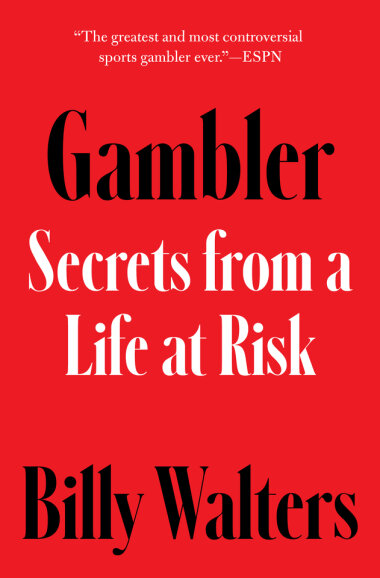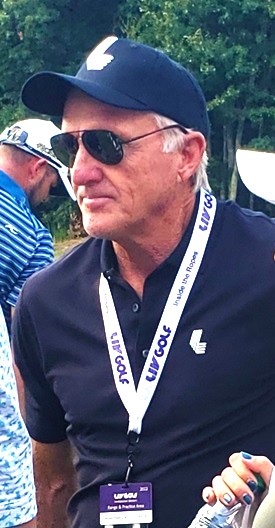
As all but cave-dwellers know, the golf world has gone topsy-turvy ever since LIV Golf came on the scene. The opening round of the first LIV Golf Invitational took place on June 9, 2022, at the Centurion Club near St. Albans in England. There was no single opening tee shot, of course, since the LIV tournaments, 54 holes, are played shotgun style.
 But LIV has been more like a howitzer, and the shrapnel is still falling. The long and antagonistic birth of the rival league to the PGA Tour has led, currently, to a still unsettled state of affairs. There is a settlement on the table, but the details remain less than pellucid, and plenty of heads are still being scratched in puzzlement.
But LIV has been more like a howitzer, and the shrapnel is still falling. The long and antagonistic birth of the rival league to the PGA Tour has led, currently, to a still unsettled state of affairs. There is a settlement on the table, but the details remain less than pellucid, and plenty of heads are still being scratched in puzzlement.
Once the surprise announcement came—just under a year after the first LIV tournament—that the Tour and LIV’s sponsor, the Saudi Public Investment Fund (PIF), had come to an agreement to (somehow) envelop the two tours (including the European tour), the war seemed to be over and it was anyone’s guess who the real winners were. It would appear to be the Saudis, but there’s still plenty of dust left to settle.
But Dylan Wu, whose Tour career earnings since 2018 are just over half what one win on the LIV tour earns ($4 million) had a perceptively succinct summation of the entire affair: “I guess money always wins.”
Wu is quoted in Alan Shipnuck’s “LIV and Let Die: The Inside Story of the War Between the PGA Tour and LIV Golf” (Avid Reader Press, $32.50), a wonderfully comprehensive account of golf’s ongoing imbroglio.
Yes, money—lots of money—is at the heart of this Gordian knot, but it’s not the whole story, and Shipnuck does an impressively masterful job in trying to untangle all the strands. It’s a compelling read. Another key element at play, he suggests early in his narrative, is vengeance.
The real villain of the scenario, critics of LIV would suggest, is Saudi Crown Prince Mohammed bin Salman, whose henchmen took a bone saw to journalist Jamal Khashoggi. The entire thrust of LIV, goes one narrative, was to “sportswash” this and other human rights abuses of the Saudi regime.
But as for golf, Greg Norman emerges as the heavy. The two-time Open Championship winner (and multiple hard luck major loser), according to Shipnuck, had never gotten over the snub of his failed 1989 proposal for a World Golf tour (to be funded by Rupert Murdoch). At an off-season tournament, Norman’s own Shark Shootout, he unveiled the plan to players, one of whom happened to be the King: Arnold Palmer.
Palmer listened, but eventually said, “I don’t want any part of this,” and walked out of the room. After some shocked silence, Lanny Wadkins chimed in, “If it’s not good enough for Arnold, it’s not good enough for me.” He left, and then everyone left. The egg apparently hardened on Norman’s face for all the succeeding years, until he took the public reins of LIV, not without further controversy.
Such context is part of the skill Shipnuck brings to his story, and he does the same for the other characters swirling around the scene: Phil Mickelson, of course (subject of Shipnuck’s Phil, reviewed here); Tour commissioner Jay Monahan, PIF governor Yasir Al-Rumayyan, Brooks Koepka, Patrick Reed, Pat Perez, Rory McIlroy, Brandel Chamblee and many others.
So many others one wishes there was an index. But in an hilarious “Note to Golf Industry Insiders” on the back cover there’s this: “Sorry. This book does not contain an index. If you want to find out how you’re portrayed, you’ll actually have to read it.”
<<<>>>
 Billy Walters makes a cameo appearance in Shipnuck’s book, Shipnuck makes a cameo in Walters’ book, and Phil Mickelson is all over both of them. But Walters’ “Gambler: Secrets From a Life at Risk” (Avid Reader Press, $35) is more accurately an autobiography of the famed (in some quarters) gambler and golf entrepreneur.
Billy Walters makes a cameo appearance in Shipnuck’s book, Shipnuck makes a cameo in Walters’ book, and Phil Mickelson is all over both of them. But Walters’ “Gambler: Secrets From a Life at Risk” (Avid Reader Press, $35) is more accurately an autobiography of the famed (in some quarters) gambler and golf entrepreneur.
Walters was all over the media when his book first came out, and the questions invariably turned to his relationship with Mickelson. It was Mickelson’s refusal to testify at Walters’ insider trading trial that, Walters claims, led to his conviction and imprisonment: “Bottom line, if he had simply taken the stand in my trial and told the truth about the public information I had provided him, I believe that I never would have stepped foot inside a rat-infested Pensacola prison.”
Walters also claims he was innocent, but the book actually opens inside the prison, and it sets up an engaging narrative. How much of a writer Walters may be is a little open to question. You have to turn to the title page to see that Walters wrote the book “with Armen Keteyian,” the co-author of the persuasive Tiger Woods biography (reviewed here).
Read the acknowledgments and a couple of other early writers are mentioned, suggesting that Walters may have had a troublesome manuscript at some point. But no matter, it all came out right in the end. Whatever you may wind up thinking of Walters, the book is vastly entertaining.
It takes Walters from an impoverished Kentucky upbringing, where he early on started on his gambling ways and heavy drinking. He stumbles his way through two young marriages, becomes an expert car salesman but regularly blows through his earnings with excessive drunken wagers. He begins to right the ship with his third marriage to Susan Humphries and their move to Las Vegas.
Walters, now 77, works his way into becoming one of the most successful sports bettors of all time, and the owner or operator of various golf courses—he is now in both the Las Vegas Golf Hall of Fame and the Sports Gambling Hall of Fame, and has an estimated worth of $200 million. There are plenty of juicy tales in the book about high-stakes wagering and a parade of Vegas characters right out of a Scorsese movie.
For those looking to pile up their own sports betting fortune, there are a few chapters dense with the analytical methods Walters says he successfully used, and good luck following all that.
 Along the way he and Mickelson became betting partners for a few years. Walters estimates that, “Phil wagered a total of more than $1 billion during the past three decades. The only other person I know who surpassed that kind of volume is me. During a twenty-year period beginning in the mid-nineties, Phil’s losses approached $100 million.” Mickelson’s signing bonus with LIV was reported to be $200 million.
Along the way he and Mickelson became betting partners for a few years. Walters estimates that, “Phil wagered a total of more than $1 billion during the past three decades. The only other person I know who surpassed that kind of volume is me. During a twenty-year period beginning in the mid-nineties, Phil’s losses approached $100 million.” Mickelson’s signing bonus with LIV was reported to be $200 million.
Maybe Wu is right.
<<<>>>
This piece originally appeared in the Oct-Nov. 2023 issue of Golf Oklahoma in slightly different form.

